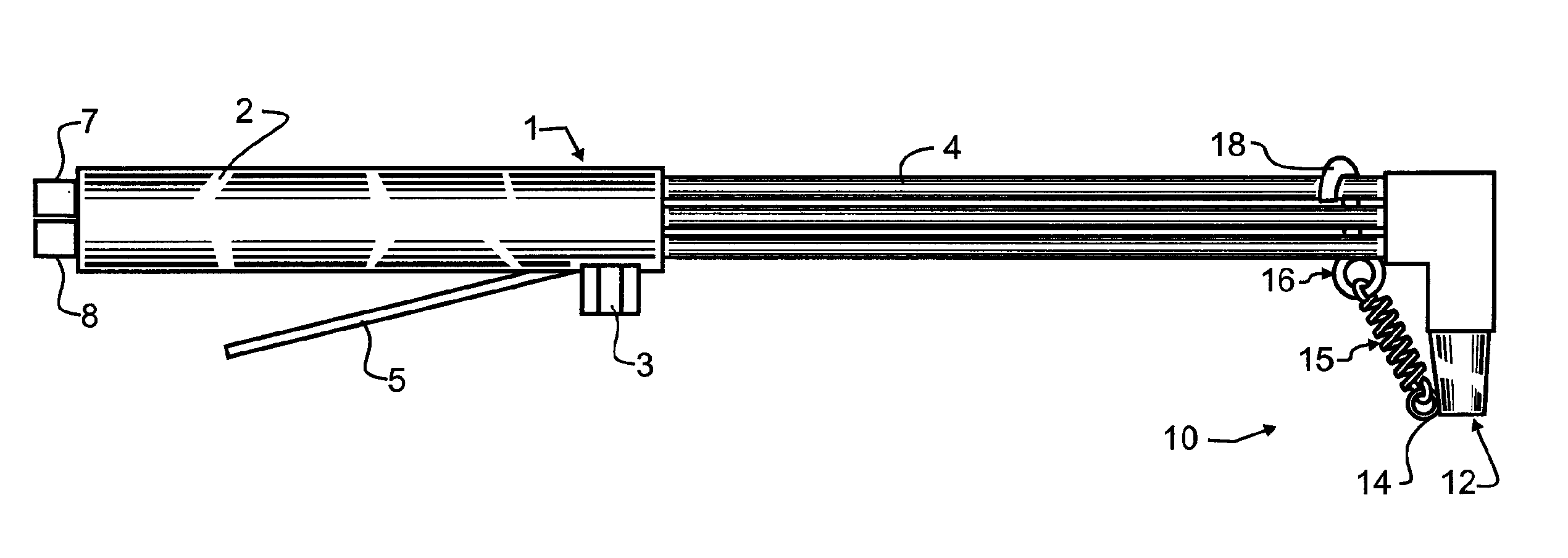Torch Tip Protector
a torch tip and torch technology, applied in the field of gas torch tip protectors, can solve the problems of insufficient brazing for many steel applications, large bulky types of welders, and hard and stronger steel compositions, and achieve the effects of low cost, easy manufacturing of apparatus, and small siz
- Summary
- Abstract
- Description
- Claims
- Application Information
AI Technical Summary
Benefits of technology
Problems solved by technology
Method used
Image
Examples
Embodiment Construction
[0021]Manifested in the preferred embodiment, the present invention provides a torch tip protector 10 that is elastically retained to an oxyacetylene cutting torch tip 6. Oxyacetylene cutting torch 1 is coupled to a source of oxygen torch gas 7 as is well-known in the art, and may for exemplary purposes comprise as a hose that couples to a regulator, the regulator in turn coupled through a shut-off valve to an oxygen tank. Oxyacetylene cutting torch 1 is also coupled to a source of acetylene torch gas 8 as is well-known in the art, and may for exemplary purposes comprise as a hose that couples to a regulator, the regulator in turn coupled through a shut-off valve to an acetylene tank. A torch handle 2 may preferably include one or more adjustment valves 3 to permit control of the flow of one or more of the gases directly at torch handle 2. In addition, an oxygen blast trigger 5 will preferably be provided that enables a welder to easily turn on and off a flow of oxygen through a cen...
PUM
| Property | Measurement | Unit |
|---|---|---|
| Electrical resistance | aaaaa | aaaaa |
| Flexibility | aaaaa | aaaaa |
| Elasticity | aaaaa | aaaaa |
Abstract
Description
Claims
Application Information
 Login to View More
Login to View More - R&D
- Intellectual Property
- Life Sciences
- Materials
- Tech Scout
- Unparalleled Data Quality
- Higher Quality Content
- 60% Fewer Hallucinations
Browse by: Latest US Patents, China's latest patents, Technical Efficacy Thesaurus, Application Domain, Technology Topic, Popular Technical Reports.
© 2025 PatSnap. All rights reserved.Legal|Privacy policy|Modern Slavery Act Transparency Statement|Sitemap|About US| Contact US: help@patsnap.com



